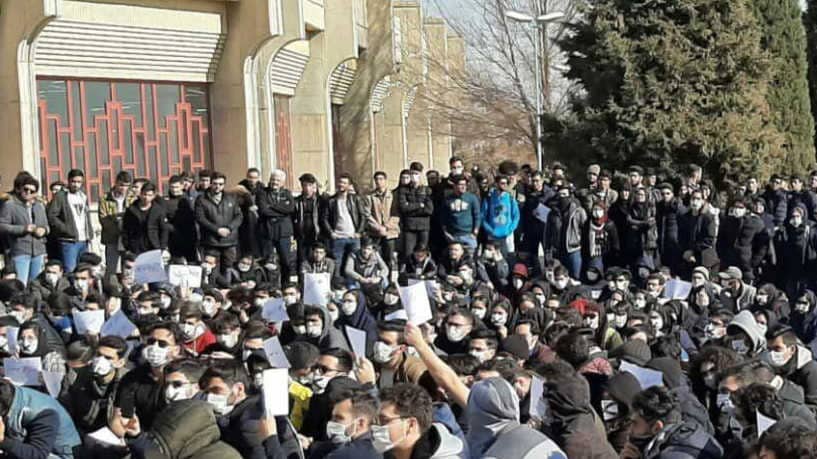

WHEN government officials belatedly admitted that Iranian missiles were responsible for downing a Ukrainian airliner taking off from Tehran, university students who had gathered to mourn the victims turned vigils into protest rallies against the authorities’ incompetence and lying. These quickly developed into openly anti-regime protests. Soon the crowd were calling for the overthrow of the regime and Supreme Leader 80-yr old Ali Khamenei.
Back in November the country witnessed an even bigger wave of mass protests, affecting more than 100 Iranian cities. These were triggered by President Hassan Rouhani’s decision to triple gasoline prices in order to plug a widening hole in the budget. Demonstrators attacked government buildings and symbols of the regime.
The police and paramilitary forces responded brutally. Amnesty International put the number of dead at more than 300 and Reuters as high as 1,500, including many teenagers and at least 400 women. An internet and mobile phone blackout failed to stop the movement spreading. These demonstrations, the biggest since the failed ‘Green Revolution’ in 2009, were themselves a repeat of those others that rocked Iran in late 2017.
Trump’s strategy of ‘maximum pressure’, i.e. escalating economic sanctions, is designed to undermine the Iranian government from within by forcing it to offload the effects onto the population, via cuts to subsidies, price hikes, and widespread unemployment, which stand at around 50 percent of youth and 25 percent of the total workforce. In a country where the vast majority of workers are on insecure contracts, earning a totally inadequate minimum wage which is rarely enforced, as much as 40 percent of the population lives below the poverty line.
The major economic hardships, aggravated by the government’s lavish spending on the war in Syria and subsidies to its regional allies, are combining with social and political concerns, into a simmering pre-revolutionary situation.
Strikes and independent trade unions are subjected to harsh repression with strike leaders given long jail sentences. But militant strikes by teachers, nurses, bus drivers, and factory workers in recent years have demonstrated the latent power of Iran’s working class.
Against the danger of revolution from within and regime change from abroad, the regime depends on a massive repressive apparatus: as well as the regular army and the elite Islamic Revolutionary Guards Corps, much of the internal policing is carried out by the Basij, a 90,000 strong volunteer militia, principally known for suppressing demonstrations and enforcing Iran’s religious morality laws regarding women’s dress and mixed-sex gatherings.
We must not let our opposition to our own rulers’ attempts to overthrow the Iranian regime and return the country to its former colonial status blind us to the justice of the popular movements for liberation within the country.
However, we should also recognise that the constant threats against Iranian self-determination made by the European Union and the United States provide immense legitimacy for a regime which presents itself as a bastion of anti-imperialism.
Socialists abroad, particularly those in the UK and USA, need to give unstinting support to Iranian workers, women, and youth in their struggles against the clerical dictatorship, as well as rebuilding a powerful working class antiwar movement which fights to defeat the imperialist adventures of our own ruling class under the slogan – Hands off Iran – victory to the Iranian revolution!